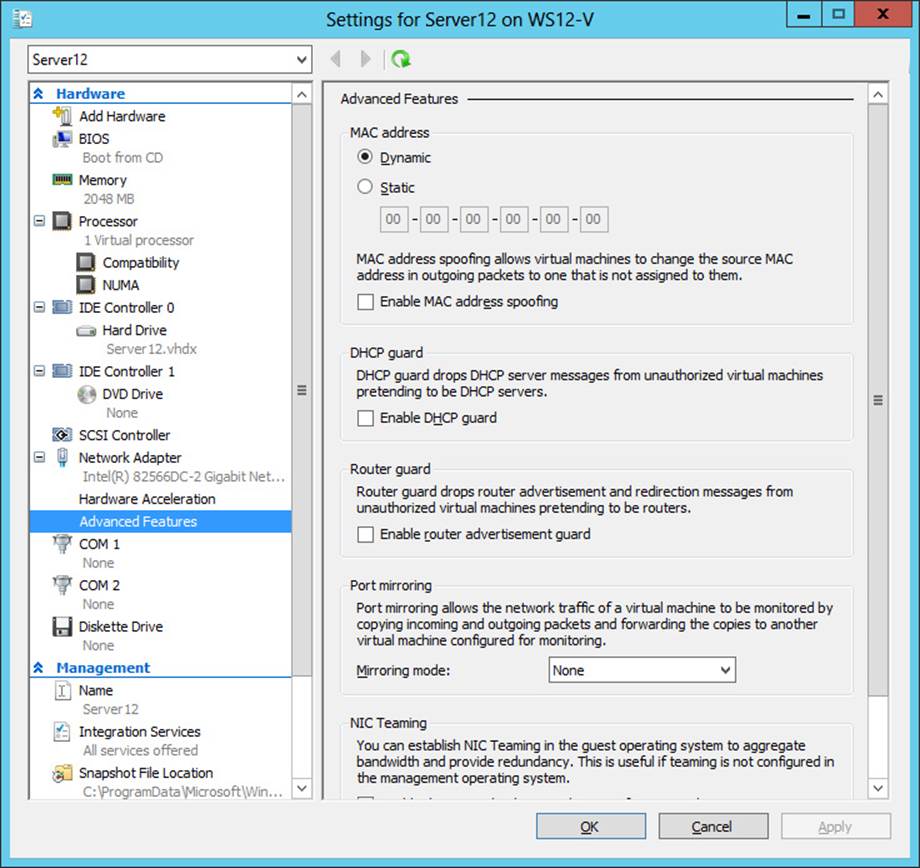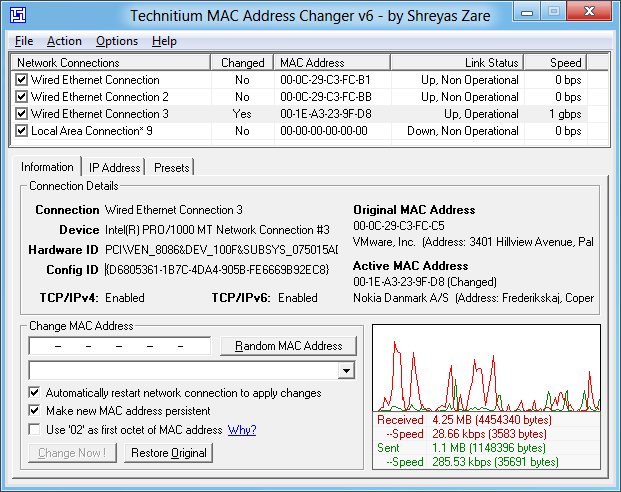
- #HOW TO CHANGE MAC ADDRESS IN WINDOWS 2012 SERVER FREE#
- #HOW TO CHANGE MAC ADDRESS IN WINDOWS 2012 SERVER WINDOWS#
The Unifi system was running 4.8.18, and obviously may change a little as things progress. So I present this tutorial to hopefully helps others get this up and running as quickly as possible. There is plenty of information out there but I found that some of it was out of date and others were missing some fairly key components.
#HOW TO CHANGE MAC ADDRESS IN WINDOWS 2012 SERVER WINDOWS#
I was recently asked to set up just s system with Unifi access points and controllers on Windows Server 2012 with Microsofts own Radius solution NPS (or Network Policy Server) and 802.1x. In the corporate wireless world many organisations prefer to use 802.1x or Radius authentication so that their users can log on to the wireless networks with their domain credentials. If you try to create a DHCP reservation for a linux machine's NIC, the DHCP admin console will not recognize the extra long MAC.Īnd why do you want to use a DHCP server on Windows as your Ubuntu server offers also a DHCP server? And it may cope with Windows servers and clients too for DHCP service.In a corporate environment shared key encryption is rarely used due to the problems associated with distributing the appropriate keys. Kbib18064 wrote:This pic below shows the issue as it appears in Win DHCP server.
#HOW TO CHANGE MAC ADDRESS IN WINDOWS 2012 SERVER FREE#
So if your setup requires only a MAC address, you're free to configure so.īut keep in mind that there exist Linux clients with more than just one NIC and hence more than just one MAC address, as Gerard has already mentioned. So providing only a MAC address is an option among several options. Kbib18064 wrote:the dhcp-client-identifier is not using the hardware MAC address of the NIC.īy default, Linux DHCP implementations offer not only IP allocation by MAC address but also by some client names provided, for more than 2 decades already. I was searching for the root cause and found a different answer which I believe may be a better solution.Ĭouldn't find any issue in your post nor a corresponding quote. However the "fix" mentioned there may not address the root cause, it's a workaround. Why don't you provide the URL to the thread you're referring to? This of course doesn't help if you do require to be multi-homed on a different wired and wireless network simultaneously and thus need two simultaneous IP addresses. Switching from wired to wireless and vice versa will then keep the same IP on each NIC and allows for a more smooth transition without established sessions terminating such as ongoing voice/video calls (a few packets may drops but calls don't hang up) remote sessions and so on. This is becoming useful with devices such as laptops that often have wired and wireless NICs. Not using a MAC address is becoming preferred (though contested as well by my IT Pros) as it helps ensure the same computer gets the same IP address each time regardless of which NIC is active at the time.


Windows Server 2019 accepts these long IDs just fine and hands out the correct IP address. Now it registers in DHCP with the actual MAC of the virtual NIC as it should and I could create a proper reservation for that MAC to a particular IP address.Īre you by chance using an older version of Windows server with its DHCP function? I have created many reservations with the longer DHCP Client IDs (Linux isn't the only OS that uses these nowadays). After that I needed to clear the entry on the DHCP server leases table and reboot the linux server. This config forces linux to use the hardware MAC. The fix I found was to edit the /etc/dhcp/nf file on the linux server and add this line ( If you try to create a DHCP reservation for a linux machine's NIC, the DHCP admin console will not recognize the extra long MAC. This pic below shows the issue as it appears in Win DHCP server. In my research it's considered the DHCP client ID. Instead it adds many more characters and creates an extremely long string which appears to contain part of the MAC address.

The default installation is using this a configuration whereby the dhcp-client-identifier is not using the hardware MAC address of the NIC. The issue being that newer Linux is using NetPlan to manage networking functionality and I'm not sure if this is a bug or intended. I was searching for the root cause and found a different answer which I believe may be a better solution. ) however the "fix" mentioned there may not address the root cause, it's a workaround. Weird MAC Address on an Ubuntu VM on ESXi I saw another closed thread on this topic (


 0 kommentar(er)
0 kommentar(er)
